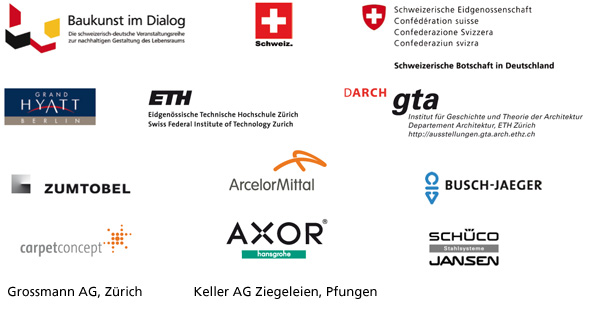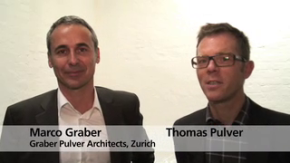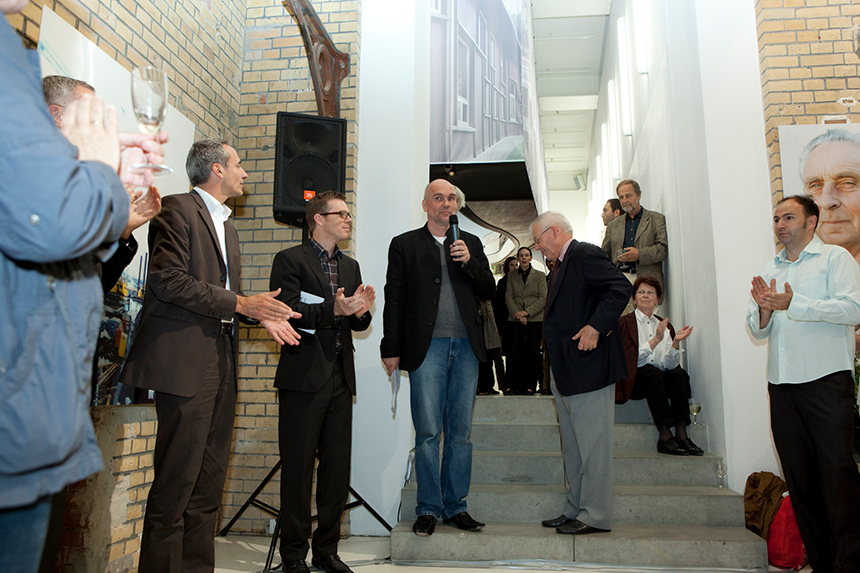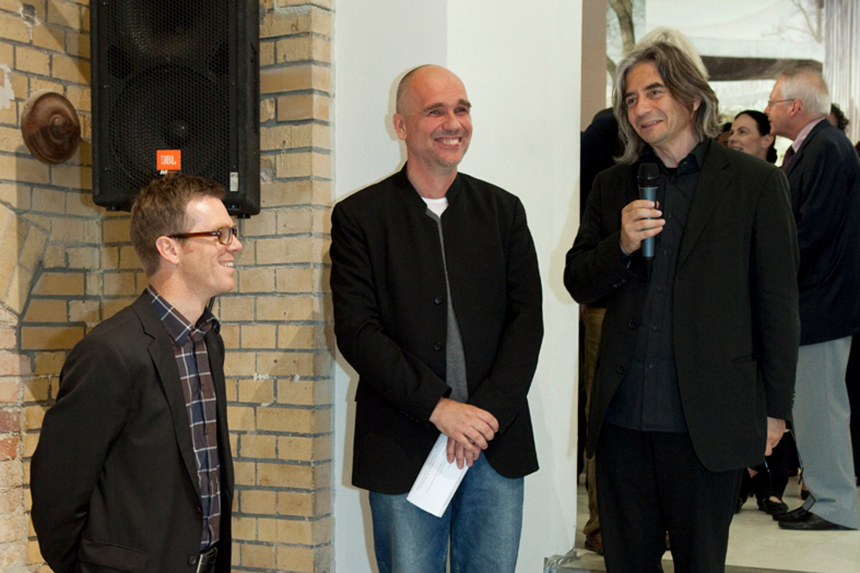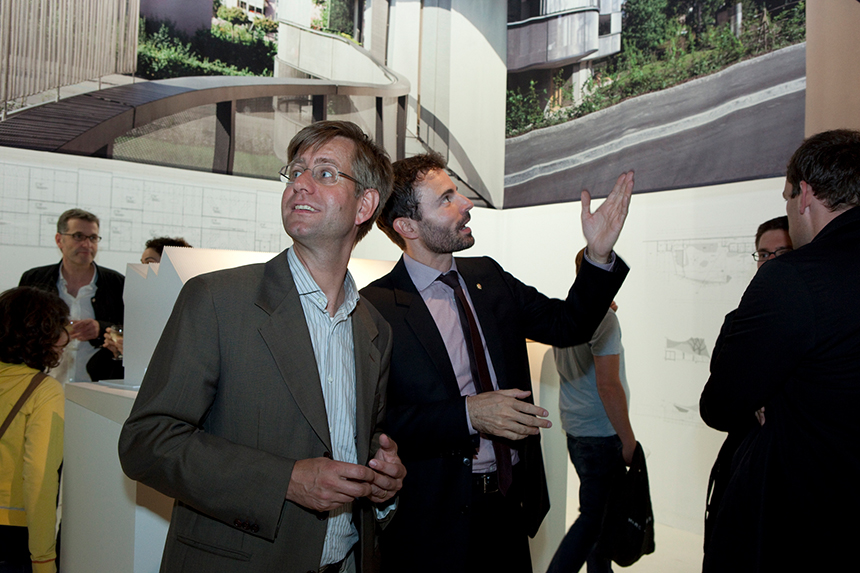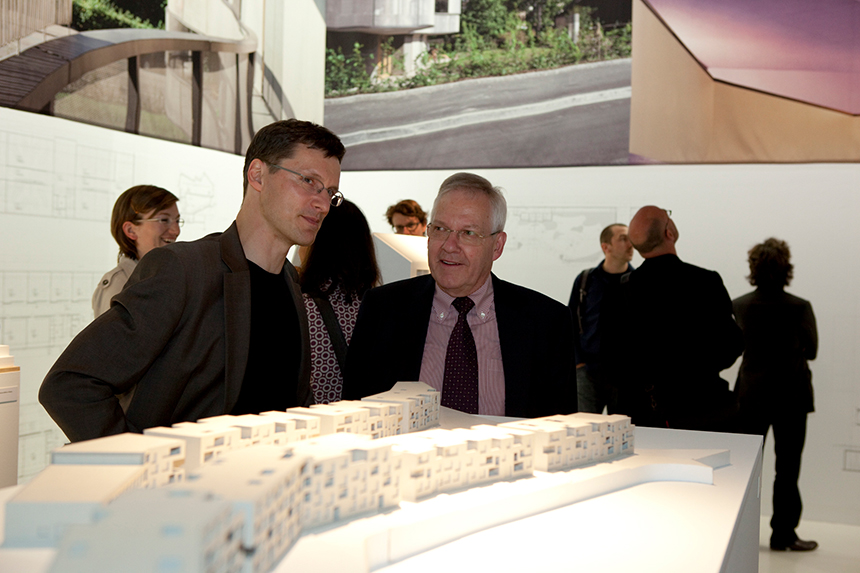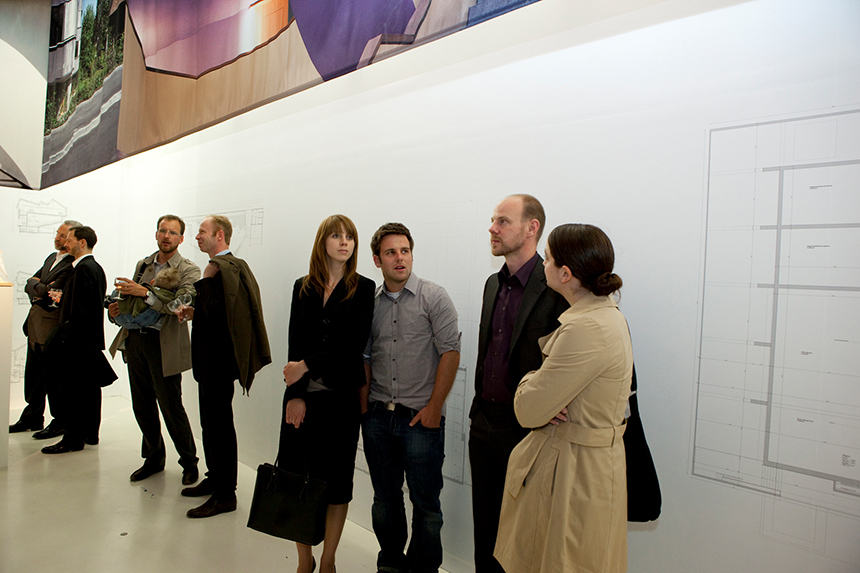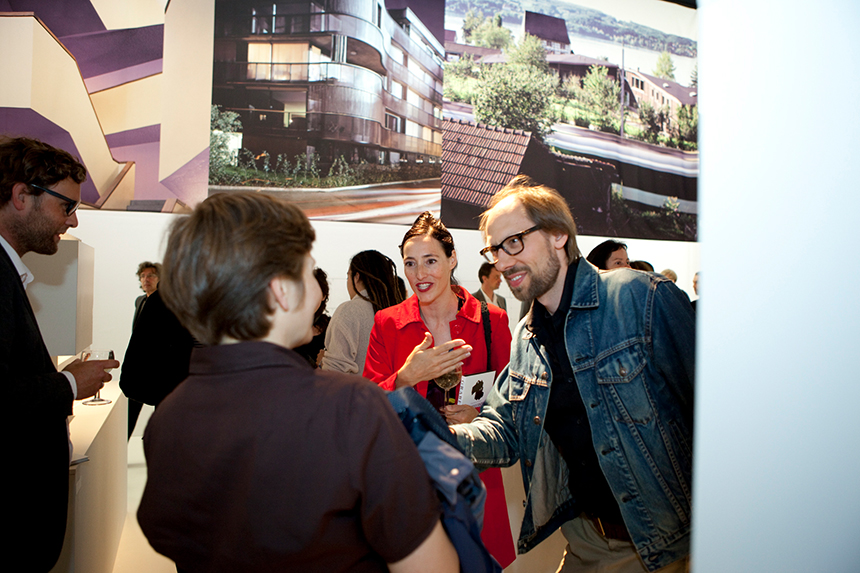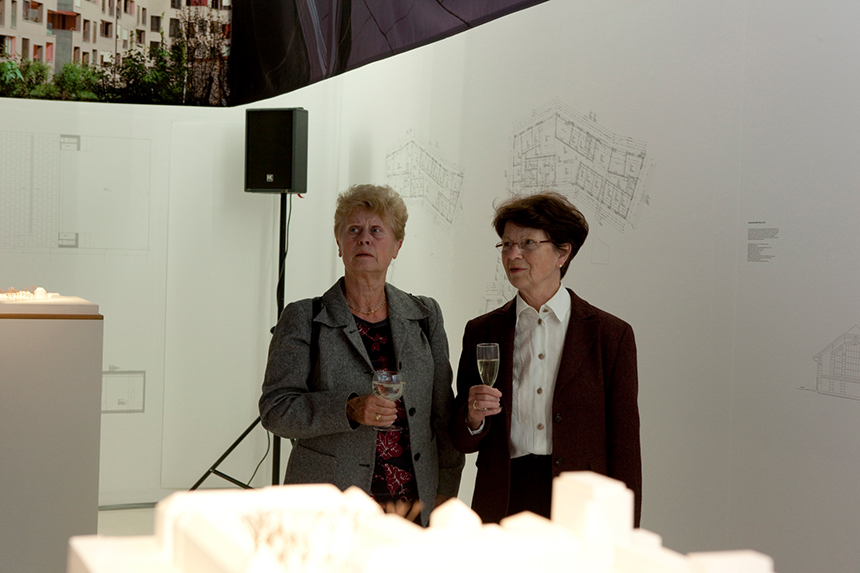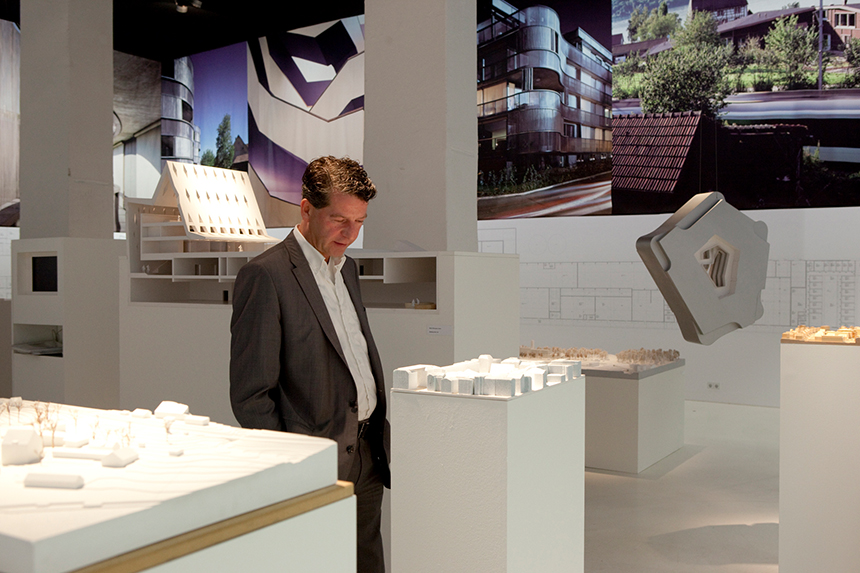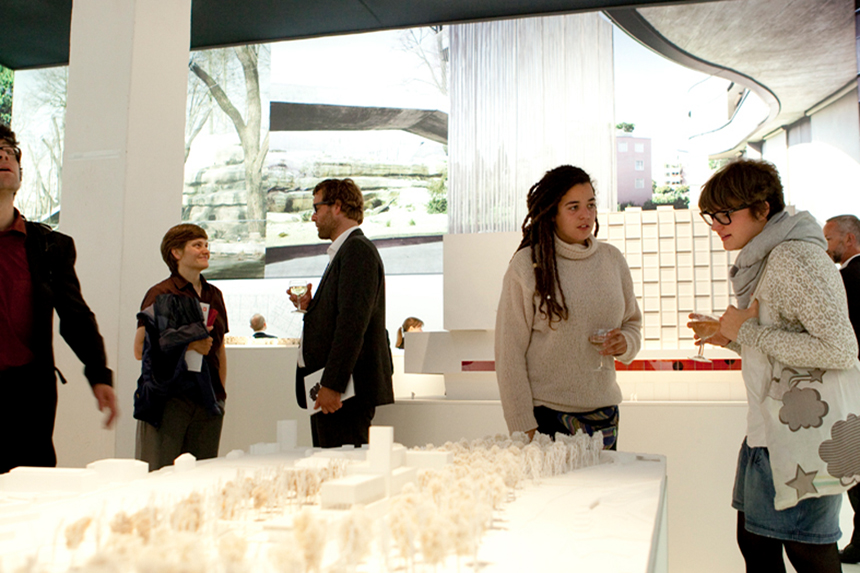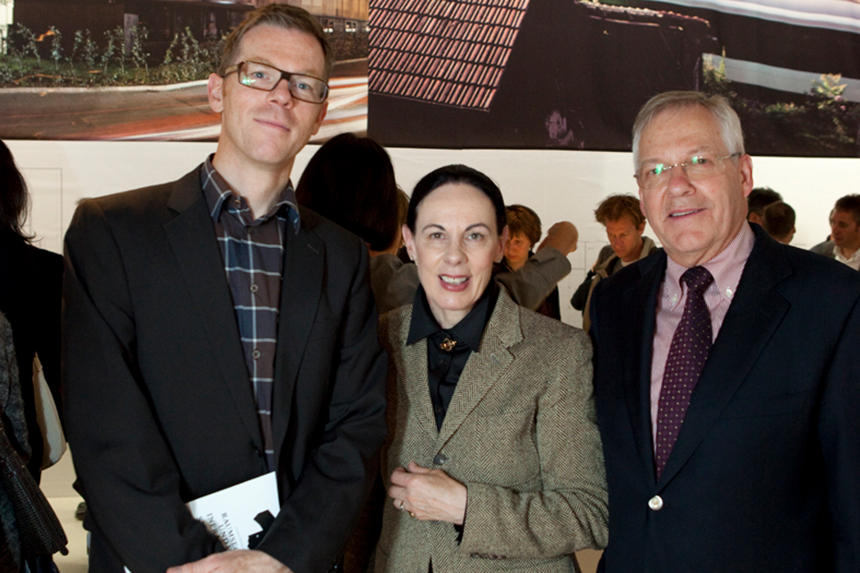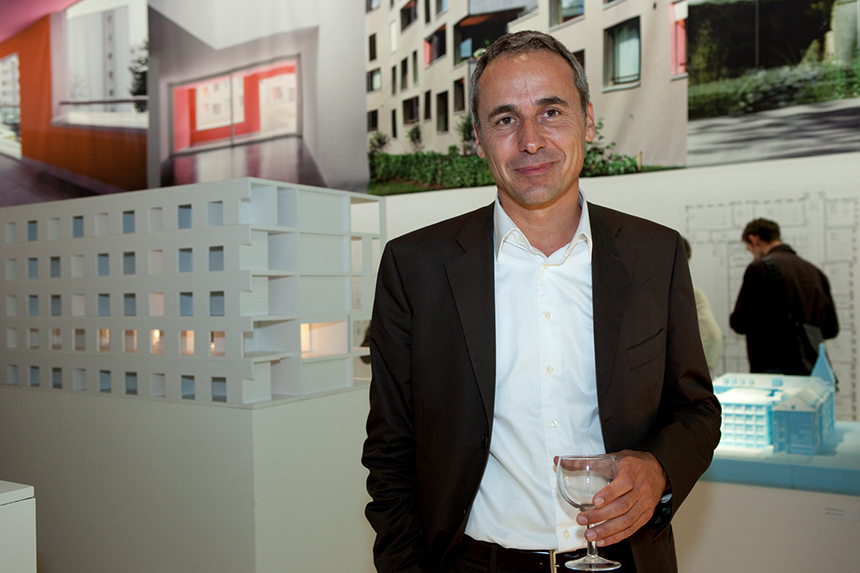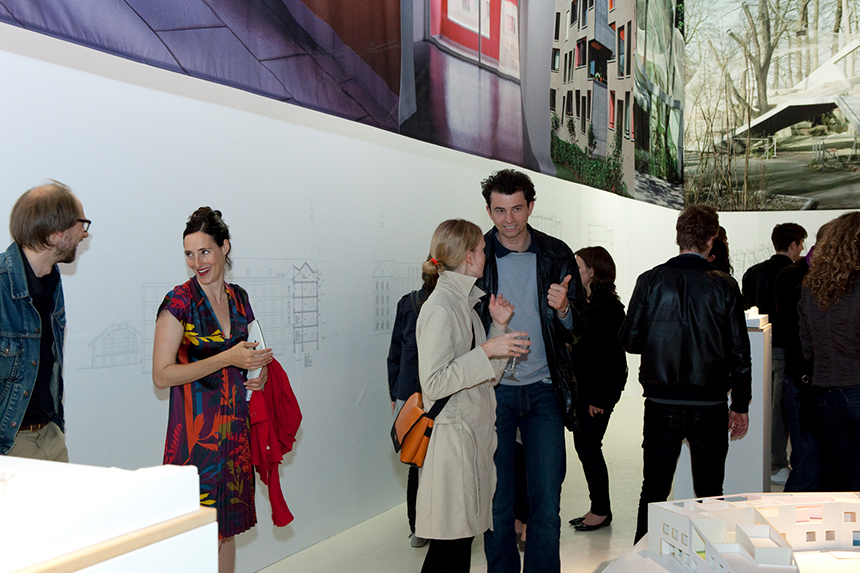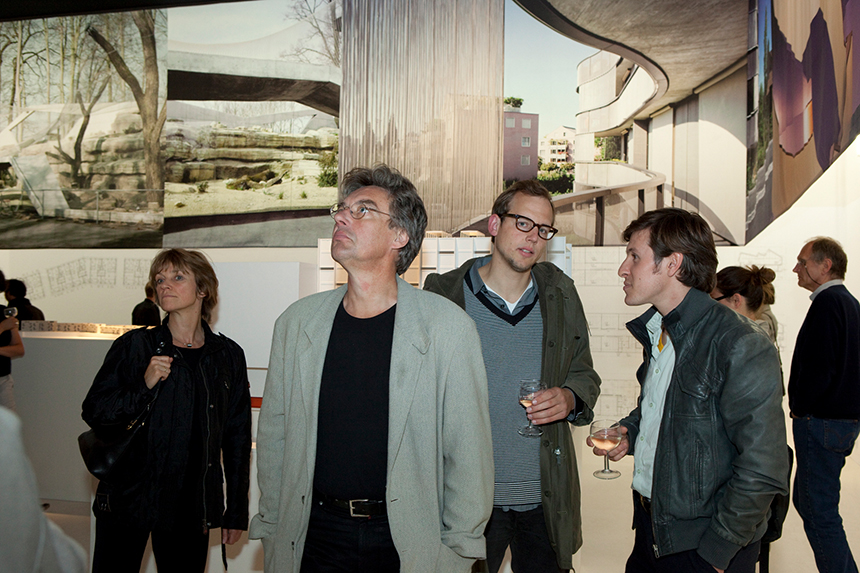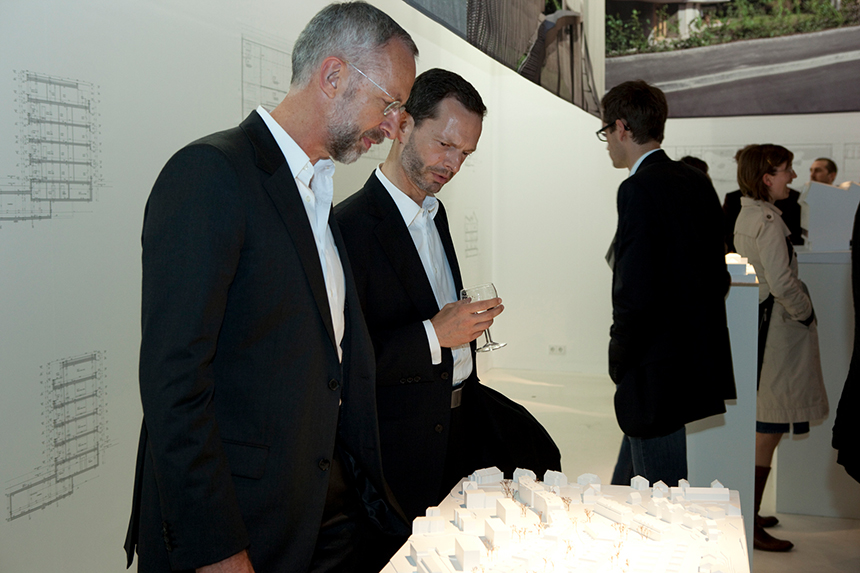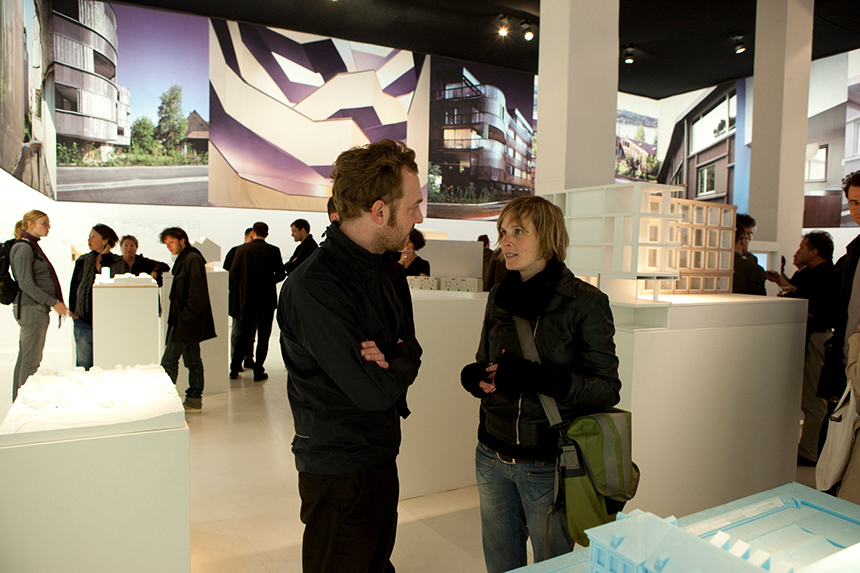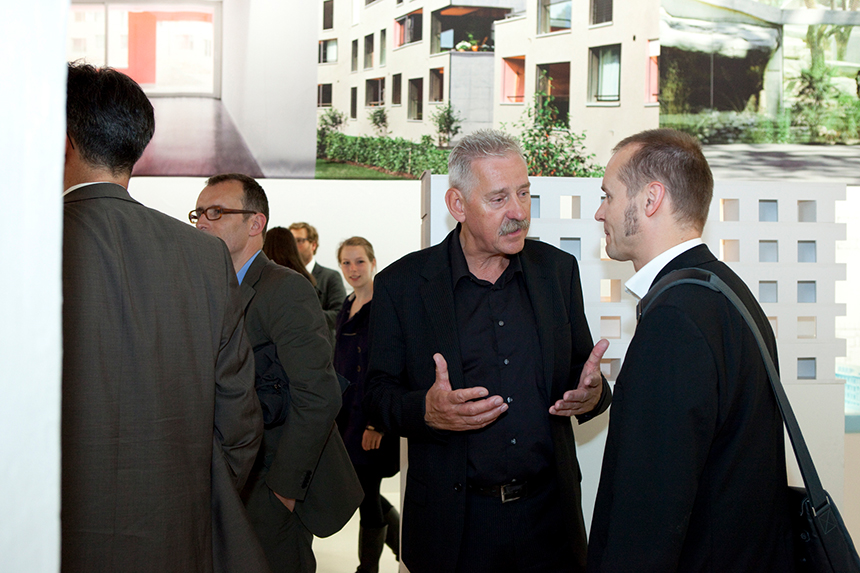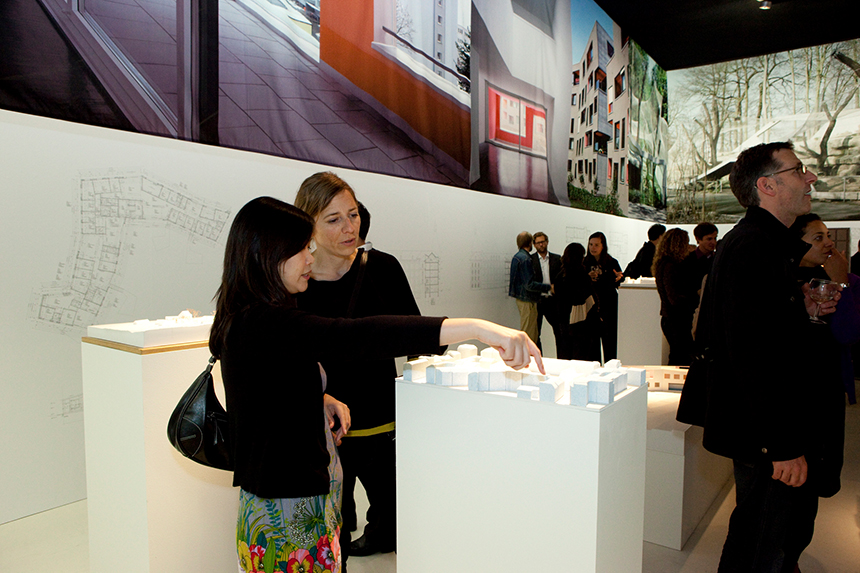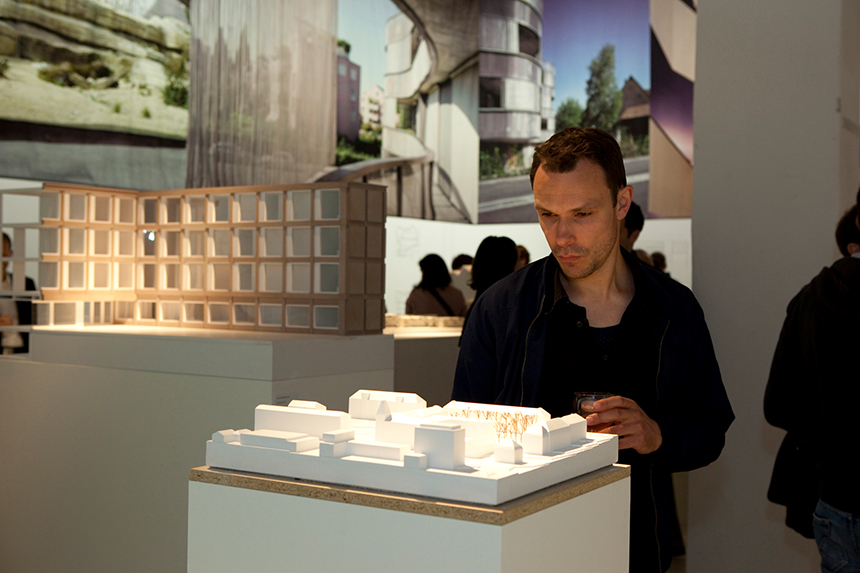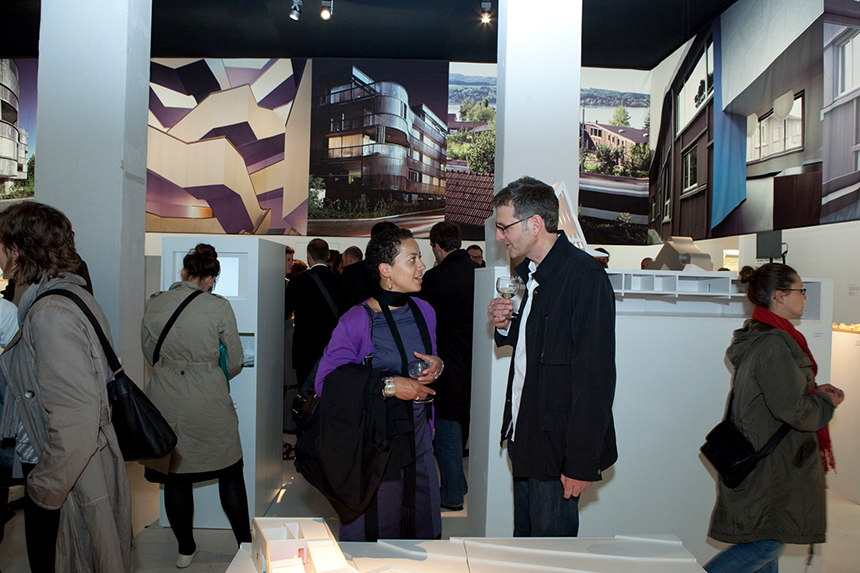The exhibition Close-up presents a snapshop of current work in the office of young Zurich architects Graber Pulver. Projects are exhibited in various phases of development, including recently built works, works in progress and competitions. Included are the Leopard enclosure at the Dählhölzli Zoo in Bern (2006); the building for the Glarisegg School Residence in Steckborn (2007); the Rondo multi-residential development in Zurich (2007); the first stage of the Chriesimatt housing development in Baar (2009); the vocational training centre in Fribourg (2009); and the extension of the vocational school «Viktoria» in Bern (2010). The Berlin exhibition will also include the waste incineration facility in Bern (2011) and the extention of the Museum of Ethnography in Geneva (2012).
In keeping its name - «Close-up» - the projects will be described through detailed working drawings (1:50) as well as large format backlit photographs by the well known swiss photographer Walter Mair. Models of various scales will be used to communicate the working methods of the office. As practically all their work is acquired through competition, there will be a particular focus on this aspect of the office’s work.
After graduating from ETH Zurich and working for renowned architects in Seville and Barcelona, Marco Graber and Thomas Pulver (both born 1962), founded their office in 1992 in Bern and Zurich. Today they have grown to an office of 40 employees.
With regular success in competition work – of which more than twenty received first prize – Graber and Pulver have successfully made a name for themselves on the Swiss architecture scene. Several projects including the waste incineration facility in Bern and the vocational training centre in Fribourg are under construction, while projects such as the Grünmatt housing development and the new Ethnographic Museum in Geneva are still in preliminary stages. For several years they have been academically active in teaching and research. Between 2006-2008 they have also been guest lecturers at the ETH in Zurich. www.graberpulver.ch
The Institute for Architectural History and Theory in the Architecture Department at ETH Zurich, brings this exhibition to Berlin. http://ausstellungen.gta.arch.ethz.ch
The exhibition Close-up is part of the event series «Baukunst im Dialog / Architecture in Dialogue» under the auspices of the Swiss Embassy in Berlin. The series – which deals with the sustainable design of the habitable environment – was conceived in collaboration with the ETH Zurich, the ETH Lausanne, the USI Mendrisio, the BSA, the SIA, and the Swiss Universities of Applied Sciences and Arts. www.eda.admin.ch/berlin Baukunst im Dialog/Architecture in Dialogue: www.baukunstimdialog.de
As part of the exhibition opening, publishers Scheidegger & Spiess will also be launching their new book Spatial Sequences & Urban Infrastructures: Graber Pulver at ETH Zurich which looks at the teaching methods of Marco Graber and Thomas Pulver at ETH Zurich. www.scheidegger-spiess.ch
Diese Ausstellung wurde ermöglicht mit der großzügigen Unterstützung von:
